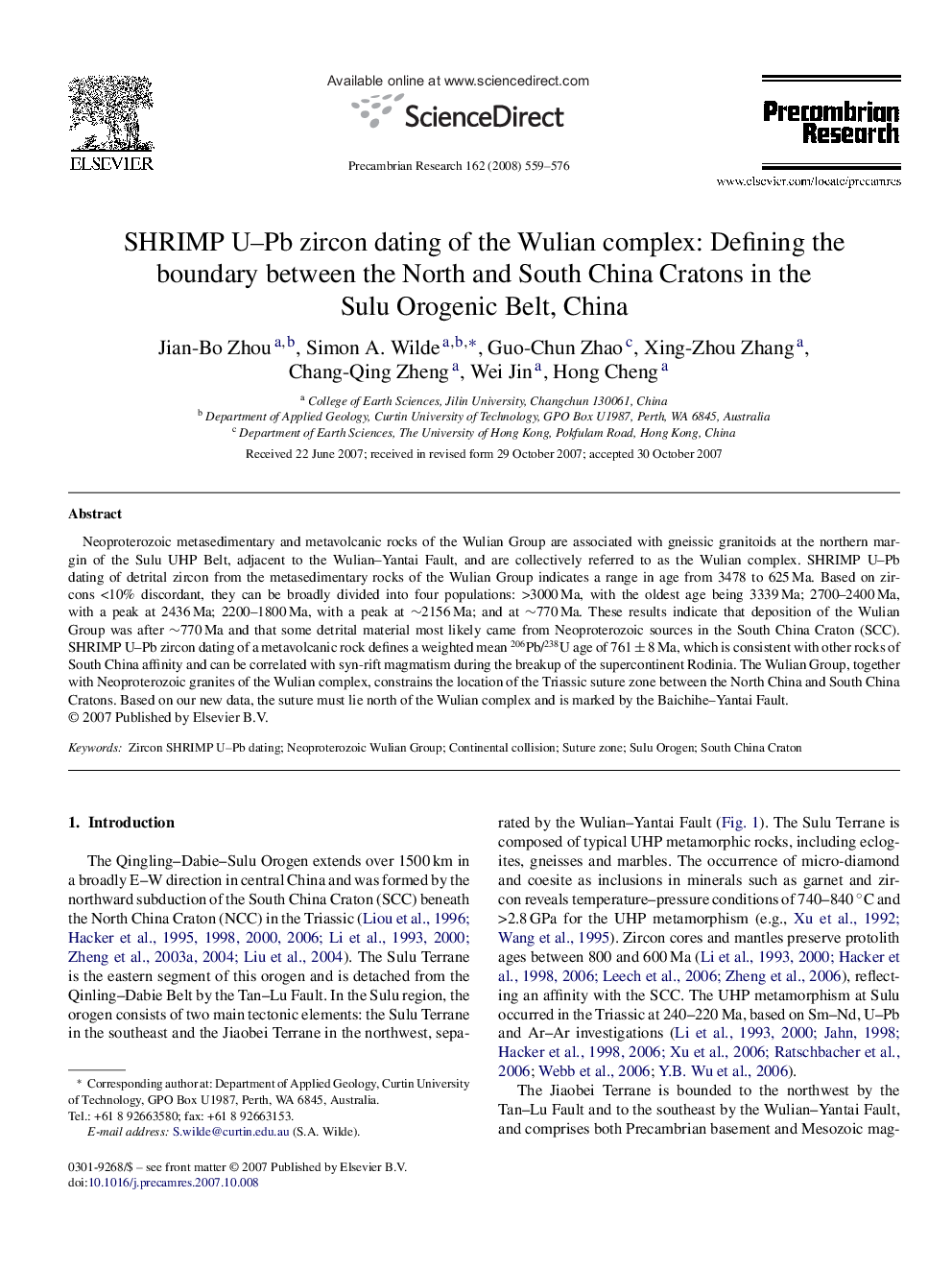| Article ID | Journal | Published Year | Pages | File Type |
|---|---|---|---|---|
| 4724416 | Precambrian Research | 2008 | 18 Pages |
Neoproterozoic metasedimentary and metavolcanic rocks of the Wulian Group are associated with gneissic granitoids at the northern margin of the Sulu UHP Belt, adjacent to the Wulian–Yantai Fault, and are collectively referred to as the Wulian complex. SHRIMP U–Pb dating of detrital zircon from the metasedimentary rocks of the Wulian Group indicates a range in age from 3478 to 625 Ma. Based on zircons <10% discordant, they can be broadly divided into four populations: >3000 Ma, with the oldest age being 3339 Ma; 2700–2400 Ma, with a peak at 2436 Ma; 2200–1800 Ma, with a peak at ∼2156 Ma; and at ∼770 Ma. These results indicate that deposition of the Wulian Group was after ∼770 Ma and that some detrital material most likely came from Neoproterozoic sources in the South China Craton (SCC). SHRIMP U–Pb zircon dating of a metavolcanic rock defines a weighted mean 206Pb/238U age of 761 ± 8 Ma, which is consistent with other rocks of South China affinity and can be correlated with syn-rift magmatism during the breakup of the supercontinent Rodinia. The Wulian Group, together with Neoproterozoic granites of the Wulian complex, constrains the location of the Triassic suture zone between the North China and South China Cratons. Based on our new data, the suture must lie north of the Wulian complex and is marked by the Baichihe–Yantai Fault.
